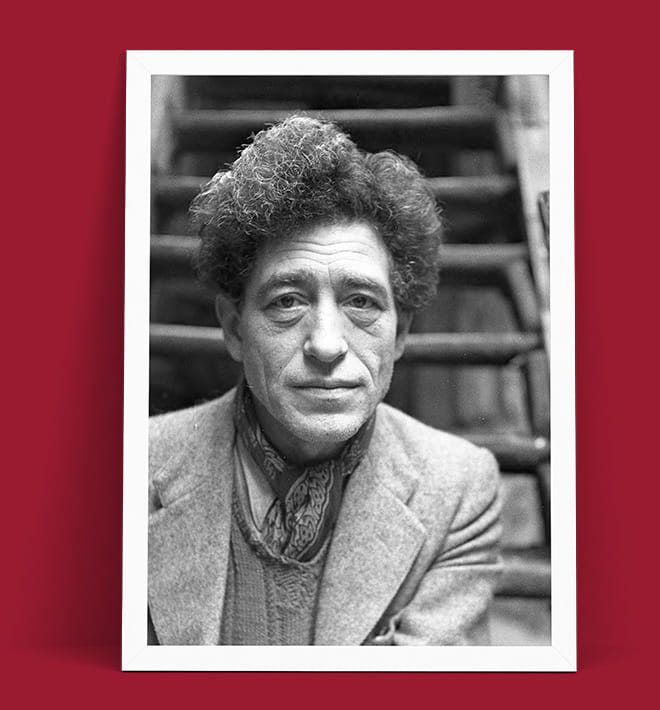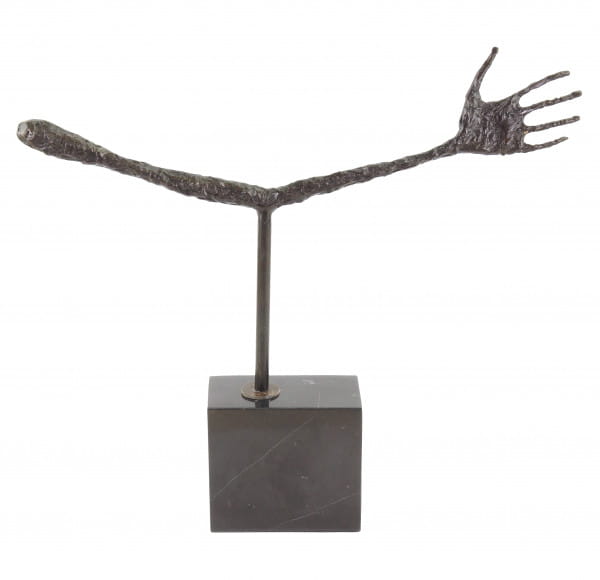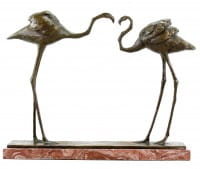Prices incl. VAT, free shipping worldwide
Ready to ship today,
Delivery time appr. 3-6 workdays










Product description
"La main 1947 - The Hand - Alberto Giacometti Sculptures"
| Height | 40 cm |
| Width | 46 cm |
| Length | 7 cm |
| Weight | 4 kg |
La main (1947) – The Hand - Signed Alberto Giacometti
La main (1947) is a disembodied arm stretching across space, its emaciated fingers splayed, its texture raw and trembling. Unlike academic renderings of the human body, this hand is not about anatomical correctness—it is about existential immediacy. It is neither relaxed nor clenched. It floats, suspended, a gesture frozen mid-thought. In its frailty lies its strength. In its incompletion lies its power. Such paradoxes are central to Alberto Giacometti Artwork, where the partial often reveals more than the whole.
The Artist Born Between Mountains and Modernism
Alberto Giacometti was born on October 10, 1901, in the secluded Swiss village of Borgonovo in the Val Bregaglia, near the Italian border. As the eldest son of the renowned painter Giovanni Giacometti, Alberto grew up surrounded by artistic influence and Alpine silence. From a young age, he displayed an extraordinary sensitivity to form, light, and perception—qualities that would later define the very soul of Giacometti Art. He studied in Geneva before moving to Paris in 1922, where he would join the city’s avant-garde circles and ultimately become one of the most influential sculptors of the 20th century. His legacy, immortalized in the austere, emaciated forms of Giacometti Sculptures, represents a unique dialogue between philosophical depth and formal innovation.
Postwar Paris and the Rebirth of Artistic Purpose
The year 1947 marks a crucial turning point in Alberto Giacometti’s career. In the aftermath of World War II, existential anxiety, personal illness, and artistic doubt all converged into a radical new sculptural vocabulary. Gone were the surrealist experiments of the 1930s. What remained was the human figure—and with it, the fragment. It was during this transformative period in his Paris studio that Giacometti created La main, or The Hand, a seemingly minimal yet deeply psychological sculpture that resonates as a condensed symbol of touch, vulnerability, and human reach. As part of the postwar series that includes L’homme qui marche and La femme debout, this bronze work belongs firmly within the most iconic group of Giacometti Sculptures.
Bronze as Vessel of Perception
Cast in dark, heavily textured bronze, the sculpture preserves every mark of the sculptor’s fingers, every indecision, every hesitation. Giacometti did not smooth away his process—he allowed it to remain visible, etched permanently into the surface. In this material, time itself seems suspended. The bronze is at once solid and ethereal, an enduring record of ephemeral thought. In this way, Giacometti Sculptures do not simply depict human forms—they reveal the very act of seeing, shaping, and doubting.
A Gesture Toward the Void
The outstretched arm of La main does not reach for anything specific. It points toward space, toward silence, toward the unknown. It is the gesture of a man suspended in time, of a being conscious of his finitude. Giacometti was deeply influenced by existentialist philosophy, particularly the writings of Jean-Paul Sartre, who saw in his work a reflection of the human condition—isolated, vulnerable, infinitely aware. In this gesture, Sartre wrote, one sees “man returning to the world.” Such philosophical weight makes La main more than sculpture—it is a metaphysical question cast in metal, a pure distillation of Giacometti Art.
The Body Reduced to Essence
Throughout the 1940s and 1950s, Alberto Giacometti relentlessly pursued the essence of the human form. The more he worked from life, the more he felt the figure receding from view. This paradox led to the radical thinning, elongation, and fragmentation that would define his most celebrated period. La main embodies this journey. By isolating the hand—a limb so often overlooked—he elevates it to a symbol of being itself: to touch, to act, to feel, to connect. In the history of Alberto Giacometti Artwork, few pieces concentrate so much conceptual weight in so restrained a form.
Suspended in Thought and Bronze
Mounted on a slender vertical stem and set on a cubic base, the hand appears to levitate. The pedestal becomes part of the composition, reinforcing the impression that the hand is hovering between objecthood and symbol, between matter and meaning. Its asymmetry, its fragility, its singularity all heighten its aura. It feels like a relic unearthed from memory or a signal from an inner world. Within the landscape of Giacometti Sculptures, La main is one of the most poetic and mysterious expressions.
A Work That Continues to Reach Us
Today, The Hand (1947) is considered one of the most enigmatic and deeply felt works in Giacometti Art. It has been interpreted as a symbol of humanity's enduring effort to grasp the world, to maintain contact, to leave a mark. In an age of overwhelming fragmentation and distraction, this silent gesture still reaches out—toward the viewer, toward memory, toward what cannot be said. It is a sculpture that touches without touching, that asks without demanding, that endures without conclusion.
A Silent Touch That Echoes Eternally
La main (1947) by Alberto Giacometti is more than a sculpted arm. It is a philosophical object, a visual poem, a fragment more eloquent than any whole. In its delicate balance, its raw materiality, and its open gesture, it reminds us of our own search—for connection, for meaning, for truth. As one of the most profound examples of Giacometti Sculptures, it continues to speak in the quietest yet most enduring voice—a voice shaped by bronze, time, and the eternal trembling of the human soul.
Our advantages
free shipping
Worldwide free shipping
14 days money back
You can cancel your order
within 14 days
secure payment services
Paypal, Master Card, Visa, American Express and more

























































